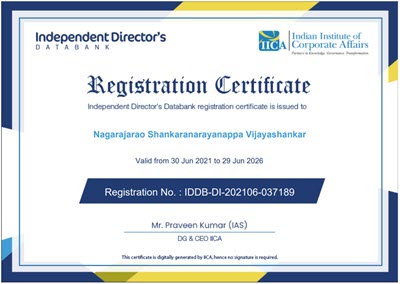Section 65B of Indian Evidence Act came into existence on 17th October 2000 along with the notification of ITA 2000.
For all the professionals in the legal circles including the Judges, understanding Section 65B and its necessity was almost impossible. Even today after 21 years, if debate is still going on on this section, one can understand….not the complexity of the law but the difficulty of unlearning and re-learning in human beings.
For decades the legal professionals are trained to look at evidence in the mould of “Oral” and “Documentary” or “Primary” and “Secondary”. As long as they continue to cling on to these concepts, it will be difficult to appreciate the need for Section 65B.
The concept of “Evidence” as we know needs to be looked afresh in the context of electronic documents. I have explained the concept several times in the past both on this website as well as on ceac.in as well as through some You tube videos.
(The latest video is available at https://www.youtube.com/watch?v=jEpEmQGjYsM&t=3s).
The concept had been admitted in a Court way back in 2004 in the Suhaskatti case (AMM Court in Chennai, where the undersigned had provided the first Section 65B certificate in India) but got derailed by the Supreme Court in the Afzal Guru case in 2005.
For those who think law is made only through Judgements and the wordings used in the statute and intentions of the law makers are secondary, the Afzal Guru judgement was proof enough to say that Section 65B certificate is not mandatory.
In the P V Anvar Vs P K Basheer judgement, (2014) the Supreme Court had made it amply clear that Section 65B certificate was mandatory for admissibility of all Electronic documents as evidence. It also over ruled the Afzal Guru judgement.
However there were still people who did not agree and they rallied behind the erroneous judgement of the Shafhi Mohammad Case (2018) which gave a strange self contradictory statement that
a) If a person is in possession of the original document, Section 65B is not mandatory.
b) If a person is not in possession of the original document, Section 65B certificate is not mandatory
In other words, where it was possible for the Court to examine the original document, the Court said that a Certificate was mandatory. If the Court itself can view the document, the relevance of the certified copy would only be a technical requirement. On the other hand where the original is not before the Court and what is produced as evidence could be a fake evidence, Shafhi Mohammad judgement said that the certificate is not required.
In this judgement the Court got confused with the difficulty in obtaining a Certificate in a case where the person having the original is not cooperative in producing the evidence and ruled in favour of making it not necessary. In the process it ignored the possibility of fake evidences being fabricated in electronic form and produced as admissible evidences without anybody taking the responsibility for the same.
To some extent the current judgement delivered on 14th July 2020 in the case of Arjun Pundit Rao addresses this issue.
In this case the petitioner who was a defeated candidate in an election challenging the election of Pundit Rao on grounds that the nominations were filed beyond the allowed time period and had to be rejected, was relying on the digital evidence which was with the Returning Officer (RO). The RO however appears to be not cooperating with the respondent refusing to provide a Section 65B certificate. Though the petitioner had a copy of the video which it appears was also available to the Court, the absence of the Certificate was sought to be used by the defendant to get the evidence rejected as it went against him.
This case was therefore a case of an official who is a neutral person in this petition being biased and not cooperating with the Court and needs to be addressed in that perspective. It is open to the Court in this case to either make the RO an accused for withholding evidence or summon the evidence to the custody of the Court.
Once in the custody of the Court, the Court could have called its own expert (may be a Section 79A-ITA 2000 accredited Digital Evidence Examiner) or allowed cloned copies to be released to the petitioner to re-submit the evidence with Section 65B certificate.
We may recall that the AMM Court in Egmore which handled the Suhas Katti Case used this process in another case where it had the CD in its possession but still felt the need to call the undersigned for a Section 65B certificate to take it on record.
We may also recall that in the last parliamentary election in Mandya, Karnataka, in a prestigious battle, a similar issue of an objection raised by a candidate and recorded in the video before the RO was sought to be summoned by one of the candidates (who eventually won) but the RO claimed that the relevant portions were erased and not available. The absence of a Section 65B certificate enabled a fabricated electronic document to be retained by the RO. Had this case been tested like the Pundit Rao case, then the question of the RO tampering with the evidence and being punishable under Section 65 of ITA 2000 or 204 of IPC would have surfaced.
The Punditrao judgement therefore has flagged such difficulties and also suggested that the Court could summon such records (Para 43 of the judgement). This cannot be a reason to expemt Section 65B Certification.
As I have held repeatedly, Section 65B certification is required to bring in a human being into the evidence and establish a method to convert the stream of binaries which is the “Original Evidence” into a “human readable/audible/visible form”.
In the P V Anvar judgement despite many points being cleared, making a reference to the CD as a “Original Document” was a small aberration. It however was not material to the final judgement but showed that the distinction between a “Container of electronic Evidence” and the “Electronic Evidence” itself was still getting mixed up.
In the Punditrao judgement we have moved a step further towards establishing the truth of what Section 65B is by categorically rejecting the Shafhi Mohammad judgement and also providing a solution to the problem which could have prompted the Shafhi Mohammad judgement.
However there is still a small omission which we may perhaps wait for some other Judgement to clarify.
I have pointed out that Section 65B(1) defines what is a “Computer Output” to which the further sub sections apply. According to the section “Computer Output” is the print out or stored, in a media produced by the computer.
The section verbatim is
(1) Notwithstanding anything contained in this Act, any information contained in an electronic record which is printed on a paper, stored, recorded or copied in optical or magnetic media produced by a computer (hereinafter referred to as the computer output) shall be deemed to be also a document, if the conditions mentioned in this section are satisfied in relation to the information and computer in question and shall be admissible in any proceedings, without further proof or production of the original, as evidence of any contents of the original or of any fact stated therein of which direct evidence would be admissible.
(P.S: Emphasis added for attention)
Para 21 of the Punditrao judgement for some reasons forget to allude to the words (hereinafter referred to as the computer output). The fact that sub sections 65B(2) to 65B(5) refer to the “Computer Output” as defined under Sub Section 65B(1) is an important aspect to recognize as this provides clarity to the procedure of certification.
Many pundits interpret “Computer Output” to the original document (eg: in the Punditrao case, the video recording in the office of the RO first registered in the DVR or a memory card in a Camera in the form of binary strings) and interpret that the person who administers that device has to provide the certificate. This certificate is the first of the series of certificates that would be required as a “Contemporaneous Certificate” whenever the document is moved from one device to other.
In practice, the RO could place the first original memory card in safe custody by making a clone copy with a Section 65B certificate available to the candidates in a CD. Then these CDs may be copied by the petitioner to be produced in the Court for which a second Section 65B certificate is produced by the person who faithfully converts the document in the CD to say a pen drive presented to the Court.
The word “Computer Output” refers to each of these documents at different stages of transfer. It is not referring only to the first computer output. Hence when a CD content is re-copied, the re-copied material in print form or soft copy form is the computer output that Section 65B refers to and the certifier has to record how he converted the document in the source CD to the print out faithfully.
This recognition that the Original is in the possession of a person who allows some body else to access it who can take a print out and create a “Computer Output” is ingrained in the Section 65B. Because of this provision, if a document is viewable on the website any viewer can record it and certify it as sourced from the website and prepare a Section 65B certified copy in print or soft copy form.
As long as the Certificate contains the details of the electronic document (which is the rendition of the binary stream as viewed through a software and hardware), the method of viewing and printing it, the details of the devices used for the purpose and contains the identity and signature of the person who viewed, printed and is signing the certificate, the Section 65B certified document is admissible.
Further the PunditRao judgement also did not refer to Section 17 of Indian Evidence Act which is important to note that Indian Evidence Act recognizes “Contained in electronic form” as a statement which is different from “Oral” and “documentary”. If we recognize this, “Three forms of Statement”, we will understand the further sections of admission where Sections upto 65 refer to “Documentary Non Electronic Statements” while 65A and 65B refer to “Documentary Electronic Form of Statement”.
I suppose we will then be able to forget Sections 59 and 60 on proving by oral admissions, Sections 61 to 65 proving by documents and look at Section 65A and 65B without the pre conditioning of our mind with the concepts of “Primary” and “Secondary” etc.
I request all Evidence Experts to take a fresh look at Section 65B based on the above and the Punditrao judgement as well as the Anvar Judgement.
I would be glad to receive any further comments if any.
Naavi
Copy of Judgement

 Article that appeared in India Legal Print magazine
Article that appeared in India Legal Print magazine







